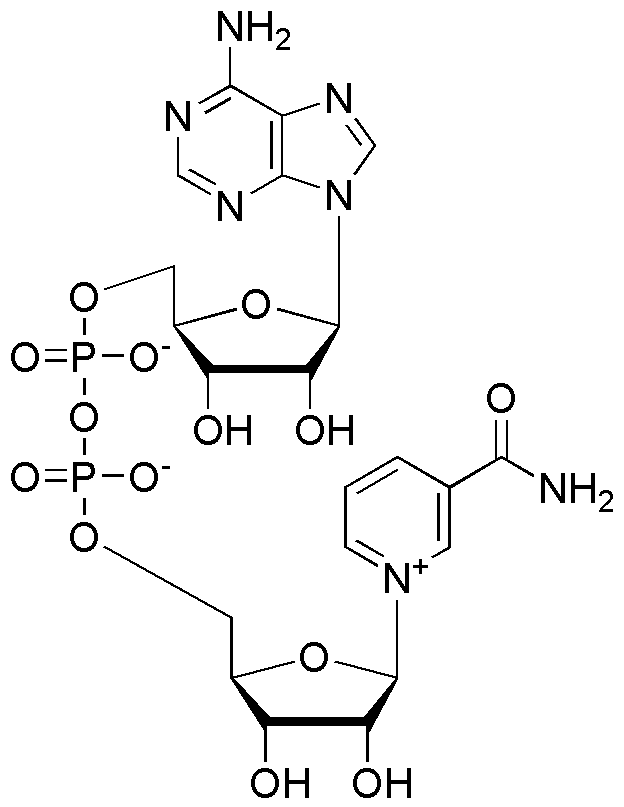Nicotinamide adenine dinucleotide is widely utilized in research focused on:
- Cellular Metabolism: This compound plays a crucial role in energy production within cells, making it essential for studies related to metabolism and bioenergetics.
- Biochemical Pathways: It is a key coenzyme in redox reactions, facilitating electron transfer in various metabolic pathways, which is vital for researchers exploring cellular respiration and photosynthesis.
- Neurobiology: Its involvement in neuronal function and survival makes it a significant focus in neurobiological research, particularly in studies related to neurodegenerative diseases.
- Pharmaceutical Development: The compound is investigated for its potential therapeutic effects, including anti-inflammatory and neuroprotective properties, which can lead to new drug formulations.
- Genetic Research: It is utilized in studies examining DNA repair mechanisms and gene expression, providing insights into genetic disorders and potential treatments.
General Information
Properties
Safety and Regulations
Applications
Nicotinamide adenine dinucleotide is widely utilized in research focused on:
- Cellular Metabolism: This compound plays a crucial role in energy production within cells, making it essential for studies related to metabolism and bioenergetics.
- Biochemical Pathways: It is a key coenzyme in redox reactions, facilitating electron transfer in various metabolic pathways, which is vital for researchers exploring cellular respiration and photosynthesis.
- Neurobiology: Its involvement in neuronal function and survival makes it a significant focus in neurobiological research, particularly in studies related to neurodegenerative diseases.
- Pharmaceutical Development: The compound is investigated for its potential therapeutic effects, including anti-inflammatory and neuroprotective properties, which can lead to new drug formulations.
- Genetic Research: It is utilized in studies examining DNA repair mechanisms and gene expression, providing insights into genetic disorders and potential treatments.
Documents
Safety Data Sheets (SDS)
The SDS provides comprehensive safety information on handling, storage, and disposal of the product.
Product Specification (PS)
The PS provides a comprehensive breakdown of the product’s properties, including chemical composition, physical state, purity, and storage requirements. It also details acceptable quality ranges and the product's intended applications.
Certificates of Analysis (COA)
Search for Certificates of Analysis (COA) by entering the products Lot Number. Lot and Batch Numbers can be found on a product’s label following the words ‘Lot’ or ‘Batch’.
Numéro de catalogue
Numéro de lot/série
Certificates Of Origin (COO)
This COO confirms the country where the product was manufactured, and also details the materials and components used in it and whether it is derived from natural, synthetic, or other specific sources. This certificate may be required for customs, trade, and regulatory compliance.
Numéro de catalogue
Numéro de lot/série
Safety Data Sheets (SDS)
The SDS provides comprehensive safety information on handling, storage, and disposal of the product.
DownloadProduct Specification (PS)
The PS provides a comprehensive breakdown of the product’s properties, including chemical composition, physical state, purity, and storage requirements. It also details acceptable quality ranges and the product's intended applications.
DownloadCertificates of Analysis (COA)
Search for Certificates of Analysis (COA) by entering the products Lot Number. Lot and Batch Numbers can be found on a product’s label following the words ‘Lot’ or ‘Batch’.
Numéro de catalogue
Numéro de lot/série
Certificates Of Origin (COO)
This COO confirms the country where the product was manufactured, and also details the materials and components used in it and whether it is derived from natural, synthetic, or other specific sources. This certificate may be required for customs, trade, and regulatory compliance.


